RISE OF TECHNOLOGY
As a literal definition, technology is knowledge put to practical use. Technology by humans dates back millions of years to the Stone Age when our ancestors used stones to cut, hunt, and make fire.
As technology progressed from the stone age to the present, it gradually became a way of life, not just a means of survival.
Advancements in technology in various fields have provided us with a wealth of opportunities to lead a more productive and fulfilling life.
Now we don’t depend on stones to make fire. In fact with the invention of immersive technology, we can have a virtual fireplace at our home that we can enjoy whenever we choose. Even during the hot summer days while sitting in the cooling comfort of an air conditioning environment without ever having to worry about a fire hazard.
DIGITAL TECHNOLOGY

In the 19th century computers heralded the dawn of the digital age.
Back in those days, computers weren’t considered an essential household item. It served as an industrial tool for calibrations, calculations, and documentation.
Their size, electricity consumption, and cost made them an expensive investment. As time passed, computers became smaller, more portable, and more scalable.
In 1976, Steve Wozniak and Steve Jobs started Apple, which made computers for homes, schools, and small businesses.
Apple and Windows revolutionized computing, paving the way for smartphones. Computers are now accessible anytime, anywhere.
This is not such a surprise anymore. Yet when the first computers were invented in the 19th century, no one could imagine the world we will live in today. Or somebody had and as imagination is the mother of invention, we now live in a digital era.
WHAT IS IMMERSIVE TECHNOLOGY?
Immersive technology is seamless integration of virtual content into the physical environment to make the user feel fully engaged in it. These virtual objects are perceived as real by the user, even though they aren’t physically present.
Virtual reality, augmented reality, and mixed reality are all forms of immersive technology or extended reality (XR).
Virtual Reality (VR): This technology replaces the user’s physical reality with a digital one. For example Oculus quest by Facebook or metaverse.
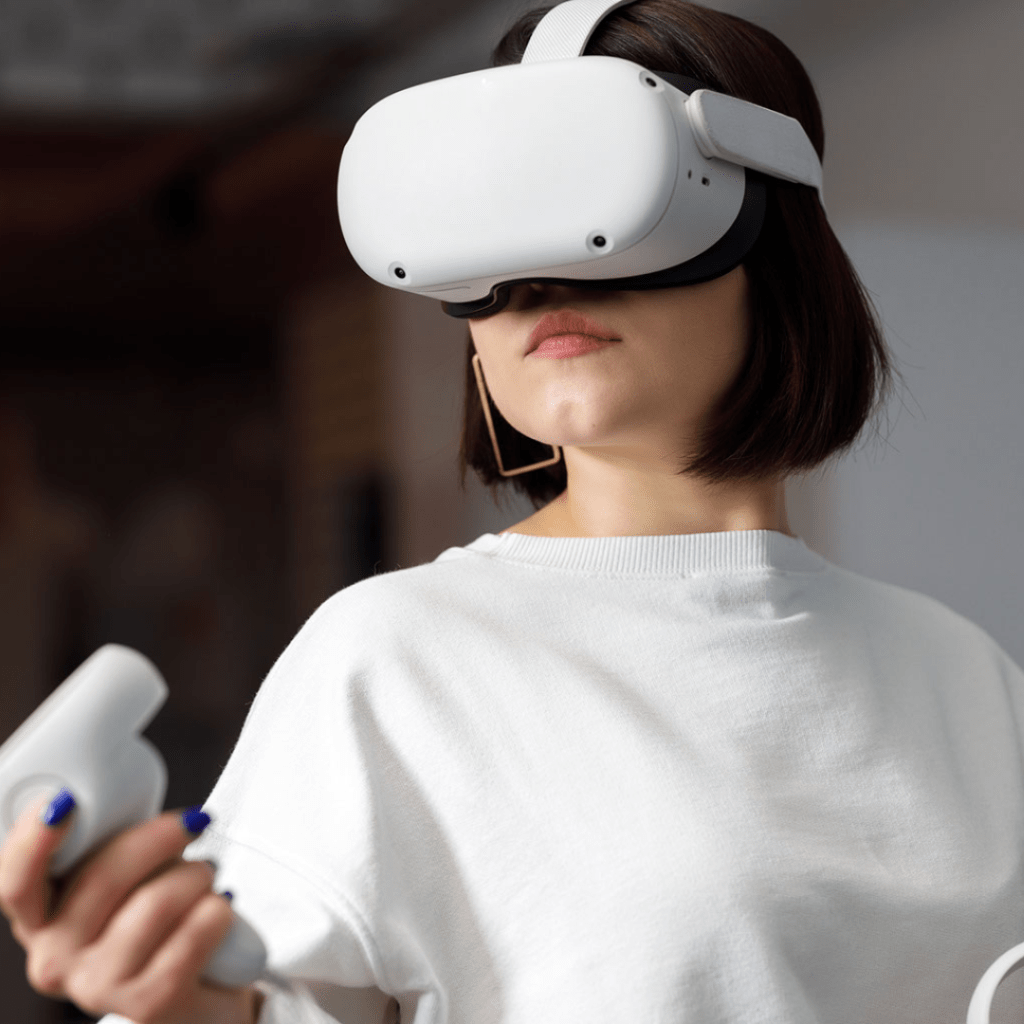
Augmented reality (AR): AR is superimposition of digital content over a real-time stream of the physical world. Example Instagram or Snapchat filters, and AR games such as Pokémon Go.
Mixed Reality (MR): This type is in between VR and AR where there is the superimposition of virtual content over the real-world environment that allows interaction between the two. Example Microsoft Hololens.
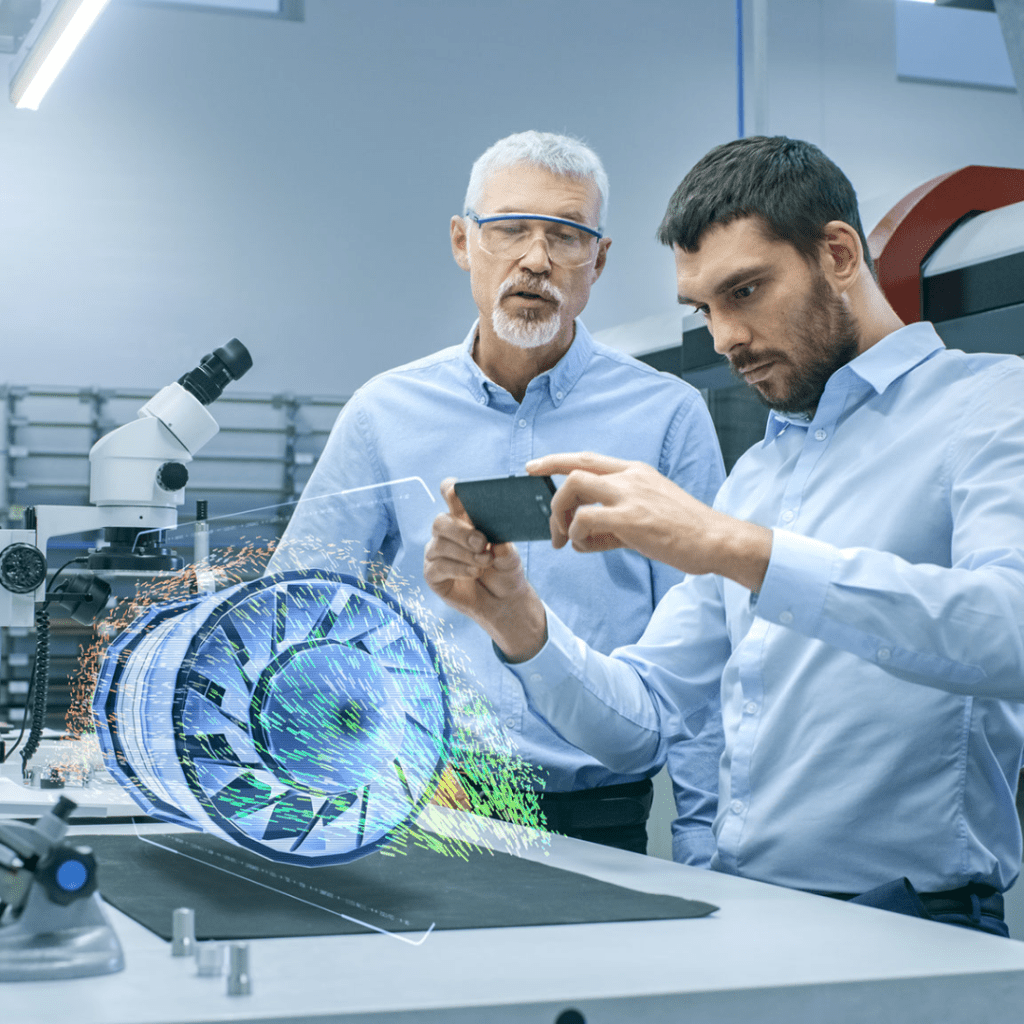
Extended reality may sound like a distant reality but it won’t take long for it to become ubiquitous just like our smartphones. It is because of the various benefits and utilization it has to offer to various sectors.
One of the major sectors is the gaming industry where it is used by players for a more immersive experience while playing games.
Some car manufacturing companies are already using this technology for improving their product design and aesthetics.

VR is being used to create a virtual environment for simulating real-world situations which helps in training.
A hostage situation for law enforcement or military trainees, driving on a busy street, or exposure to a phobia by creating challenging situations that help in desensitization are examples.
The VR Stimulates our brain’s motor cortex into perceiving things as though it exists in the real world
EXTENDED REALITY IN HEALTHCARE
In healthcare, technology has helped healthcare professionals to improve diagnosis and treatment over the years.
The advancements in technology have a lot to offer the healthcare sector.
Innovations such as artificial intelligence and immersive technology are improving quality of life and even extending lives.
1. Training of healthcare professionals:
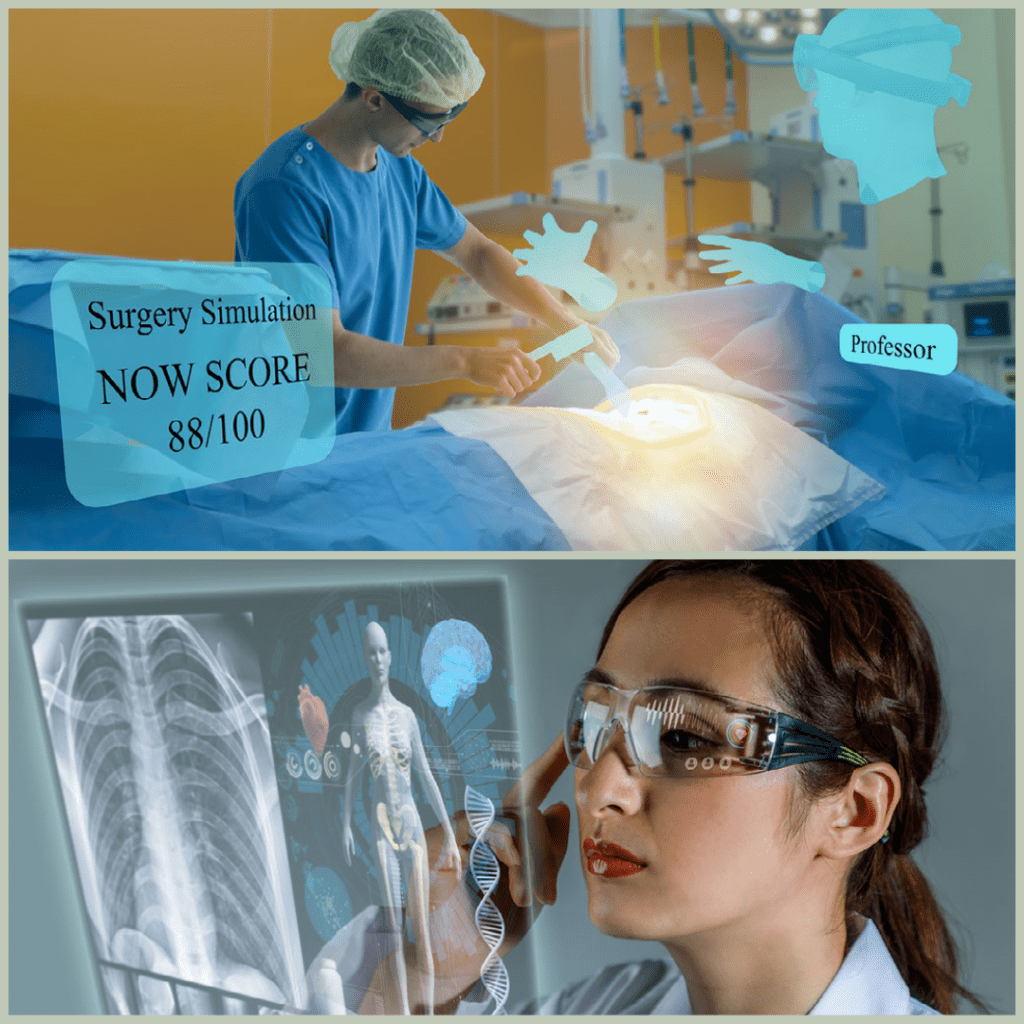
Among its many benefits some research claim that VR can be a useful tool in Improving memory accuracy. This is because the users pay more attention when learning through VR.
According to the Harvard business review, Researchers found that using the Osso VR platform, the participants’ overall surgical performance improved by 230% compared with traditional training methods.
Surgeons that used this platform for training completed the procedure an average of 20% faster than those trained traditionally.
It was also reported that these participants had better retention of surgical procedures and completed 38% more steps correctly in the procedure-specific checklist.
There are software for training of ophthalmologists on cataract surgery too.
2. Amblyopia:
Amblyopia or lazy eye is a condition in which the brain favors one eye, which leads to vision problems in the other eye.

It’s the leading cause of childhood vision problems.
Treatment usually involves blocking the stronger eye with a patch or blurring drops, forcing the brain to depend on the weaker eye.
A virtual reality-based treatment for children with amblyopia commonly known as lazy eye has been approved by the FDA (Food and Drug Administration).
A study was done between January 16, 2019, and January 15, 2020, to evaluate the safety and efficacy of dichoptic digital treatment for amblyopia. This was the first successful randomized controlled trial with participants being children between the ages of 4 and 7.
The result showed that because of better attention, satisfaction, and therefore adherence to the treatment, the digital treatment with VR can be used successfully to improve the vision in amblyopic children.
3. Phobias:

There are many therapies to combat phobias such as exposure therapy, meditation, visualization, guided imagery, and even medication.
Using VR, realistic simulations are created that can help individuals with phobias deal with stressful situations.
For example, in the case of fear of public speaking, several avatars sitting in front of the speaker can simulate the same realistic scenario as in real life. The speaker can eventually overcome his/her fear of presenting in front of a crowd through practice and relaxation.
4. Mental health:
VR was Initially used in the treatment of phobias, but has since been applied to other mental health disorders such as posttraumatic stress disorder, substance-related disorders, eating disorders, psychosis, and autism spectrum disorder.
Within a VR environment, insight into a mental disorder can be observed and treatment and counseling administered.

Studies show that VR treatments seem to perform comparably in efficacy to face-to-face equivalent interventions.
5. PTSD or post traumatic stress disorder:
VR technology surrounds a patient suffering from PTSD in a 3D environment that mimics a traumatic memory that the patient has.
For example, It has been used to provide a virtual Iraq-like environment to veterans with PTSD so that they can better cope with the experiences during their time served in those challenging situations.
6. Neurologic patients with gait and balance problems:
There was a study on patients diagnosed with acute stroke within the last 12 months requiring gait and balance rehabilitation with no cognitive impairment and who can stand for at least 10 min with or without the help of technical aids.
They were encouraged to play some VR games in standing position to test and improve their balance, coordination and fine motor skills.

The researchers found that immersive VR has a greater effect on improving balance and decreasing the risk of falls in stroke patients, as well as enhancing their perception of visual verticality compared to conventional treatment or physiotherapy.
This suggests that immersive VR along with conventional treatment can be helpful for treating balance impairments in stroke patients.
7. Phantom limb pain treatment:
80 percent of amputees suffer from phantom limb pain, a fictitious sense of a missing limb caused by the firing of impulses by the nerve endings at the amputation site.
Currently, there are two therapies, A mirror therapy creates the illusion that the limb is still there and Visual image therapy that has the patients visualize their missing limb.

Both these therapies trick the motor cortex into thinking that the missing limb is still there, thus relaxing the brain and relieving pain.
VR can offer a better representation of a missing limb without relying on a mirrored box or self imagination.
Such VR for PLP treatment will require patients to wear a headset and sensors at the base of an amputated limb that sends impulses that will be transacted into movement.
In a study, VR treatment was administered to two individuals with unilateral transtibial amputation over several weeks.
The participants experienced substantial reductions in pain following each VR session, and their pain levels before the session also decreased significantly over the course of the study.
8. Pain treatment:
The virtual world created by a VR headset is an interactive, computer-generated environment that can be used to treat chronic and acute pain. Distraction from reality is a powerful tool that has been utilized for pain relief from noxious stimuli.

Studies show that by reducing pain, anxiety, unpleasantness, and anticipation about the medical procedure, it is possible to make the experience less stressful and more bearable thus increasing cooperation which helps healthcare providers to deliver better care.
VR in combination with standard of care often facilitates a smoother procedure (i.e., fewer needle pricks/attempts).
VR for acute painful medical procedures has shown the best promise as a primary or complementary pain management practice. However, other studies have reported negative effects, mixed findings or limitations owing to age and/or technology.
With rapid advancements in technology, virtual reality devices can be used as VR analgesia, a non-pharmacological therapy in a multimodal pain management strategy.
9. Three-dimensional scans of patients:
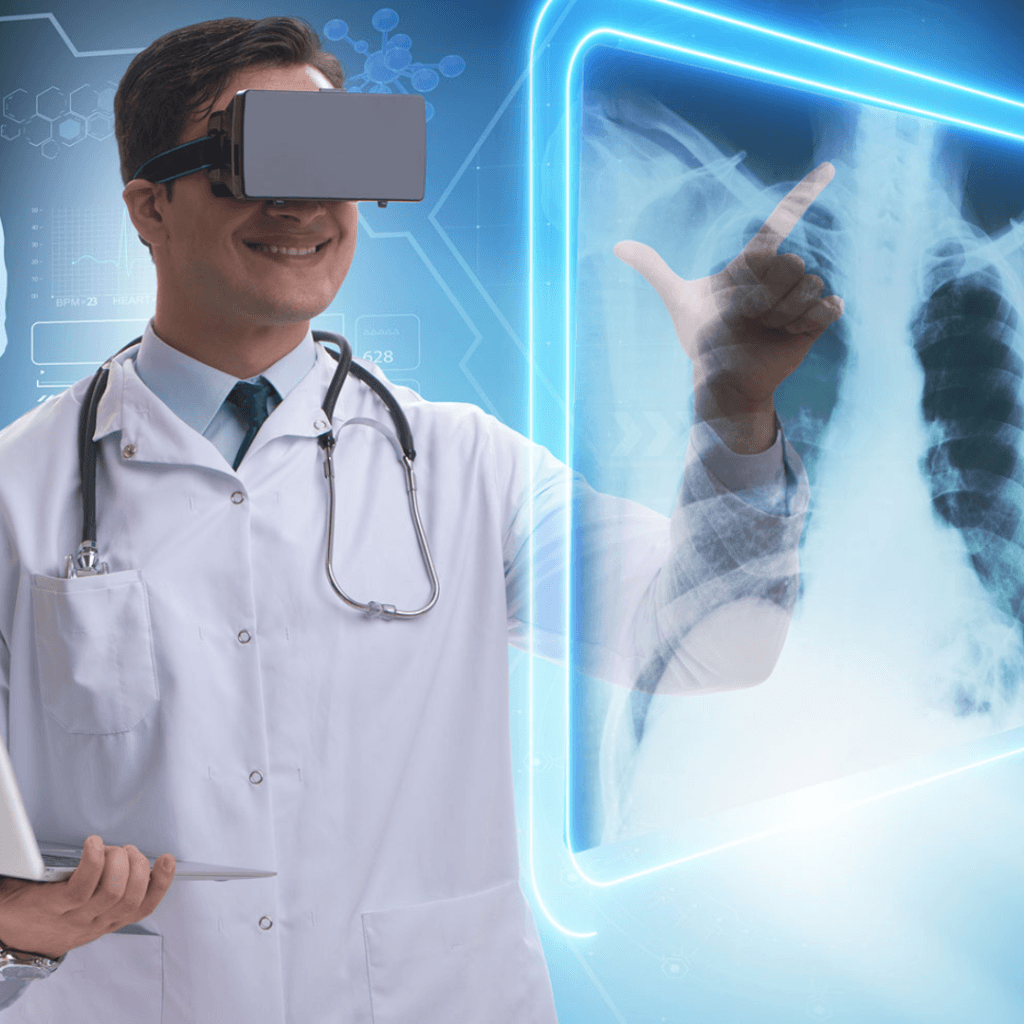
Surgeons benefit from these 3-D VR models by having a better insight and understanding of the problem and are therefore able to deliver excellent surgical care.
10. Alzheimer’s disease (AD)
AD and other dementias may benefit from the use of virtual reality therapy.
VR can be used for cognitive training and has been proved in studies to have high patient engagement and subjective benefit for the participants with cognitive measures remaining stable over a significant period (28 weeks for both).
Results also show improved performance on a spatial cognition task . Also, when dementia patients were treated and exposed to VR therapy, they showed less aggression and interacted better with their caregivers.
11. Low vision aid for visually impaired:
According to the National eye Institute, Low vision is defined as “a condition caused by eye disease, in which visual acuity is 20/70 or poorer in the better-seeing eye and cannot be corrected or improved with regular eyeglasses”
The causes can be glaucoma, age related macular degeneration, retinal problems like Retinitis pigmentosa, etc.
It reduces mobility, making it difficult to go about normal daily activities, and causes inability to read or watch TV. These individuals need visual or assistive aids to lead better lives.
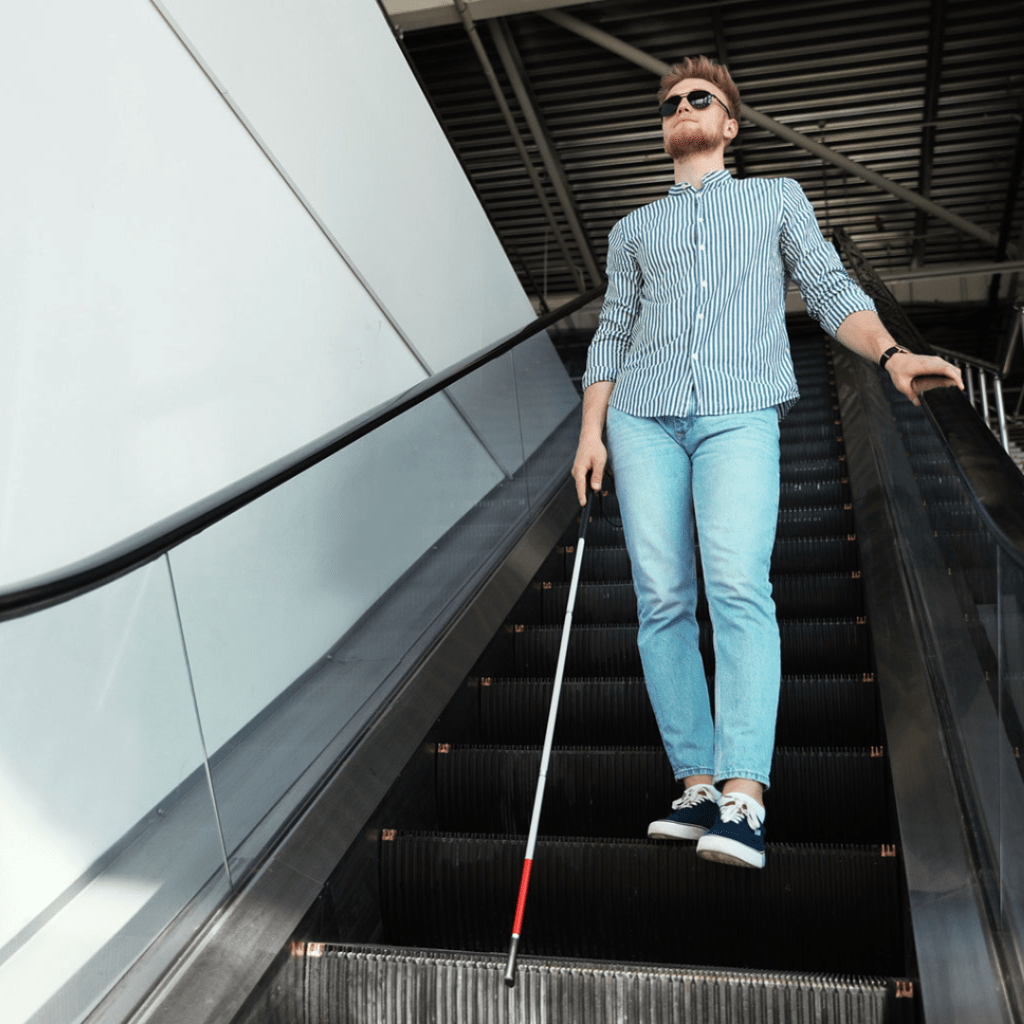
A study on AR glasses found that this device can be helpful in individuals with low vision by enabling them to see better with contrast, and color enhancements, and also navigate better with the ability to detect obstacles, understand the environment, and observe details such as faces, paintings, etc.
The researchers of this study encouraged the participants to give suggestions to improve the usability of these devices.
Further enhancements need to be done so that these glasses can be a useful mobility aid in future.
SIDE EFFECTS:
The most common side effect of this technology is VR-induced sickness.
The symptoms include:
- Dizziness
- Nausea
- Headaches
- Eye strain
- Reduced postural control or loss of balance
- Decreased presence etc.
VR should be avoided by subjects who experience seizures while watching television or playing video games.
QUICK SUMMARY
In an ever-developing field like technology, the possibilities are endless, and hospitals, doctors, healthcare professionals and patients can all benefit from it in many ways. There are concerns about technology addiction or that robots will one day take over humans in the workforce but before believing these half-truths, we need to evaluate the advantages technology has to offer and regulate it’s use to avoid misapplication.
